My parents have been visiting, and I thought they might like to see The Kelpies. A few years ago we rather enjoyed visiting Jaume Plensa’s Dream, a meditative and beautiful public sculpture commemorating Lancashire’s mining past. Like Plensa’s Dream, The Kelpies celebrate industrial heritage, but are things of water rather than of light. Kelpies are mythical Scottish water beasts, generally malevolent in nature, and able to assume many different forms. The Loch Ness “monster” should perhaps be more accurately described as a kelpie, and in Scottish song, art and literature, kelpies most often take the shape of a horse.
Taking the fabled creature as a starting point, Glasgow sculptor, Andy Scott has constructed a new mythology for the kelpie — one with a refreshingly specific sense of place, and history. Directly inspired by two local Clydesdale horses – Duke and Baron – Scott’s Kelpies celebrate the beasts who once pulled ploughs, carts and barges — effectively powering the industrial revolution in central Scotland through the Eighteenth and Nineteenth centuries.
Scott’s Kelpies have been constructed at the basin of the Forth and Clyde canal, near Falkirk. Long before the development of railways and motorways, this important waterway enabled the transportation of finished goods and raw materials between Scotland’s industrial heartland and its ports. First constructed in 1790, it fell into decline in the middle of the last century. But its recent re-opening now enables continuous passage by water between Scotland’s East and West coasts.
Scott’s Kelpies are constructed from an industrial material – steel – but when the light hits them they also seem to be made of water: rising and straining, sodden and dripping, from the basin of the canal.
While celebrating the energy and might of Scottish industry, the Kelpies represent, in themselves, a remarkable feat of industrial engineering. Each of the 990 plates that make up the two Kelpies steel “skin” is distinct and different – our guide described them as “snowflakes.” This short time-lapse film documents the process of their construction, and, when you visit, you can examine their incredible structure from the inside.
The Kelpies stand over 30 metres high, and are certainly majestic. Yet to me, it is not their size, but Scott’s very precise sense of detail and characterisation that impresses most: the flared nostrils, the flickering ears, the individual muscularity and movement. Detail at this scale somehow lends these monumental objects an immediacy that is deeply emotive.
Andy Scott says: “I see The Kelpies as a personification of local and national equine history, of the lost industries of Scotland. I also envisage them as a symbol of modern Scotland – proud and majestic, of the people and the land.” Probably the best thing about the Kelpies, it seems to me, is that they are the focal point of what seems to be a modern and genuinely public space: a landscape that, with its new network of trails, cycle paths and waterways, once again has a practical function for the folk of Falkirk and beyond.
My Mum and Dad and I all enjoyed our visit, and would highly recommend the very reasonably priced tour, as well as our knowledgable and enthusiastic guide, David.

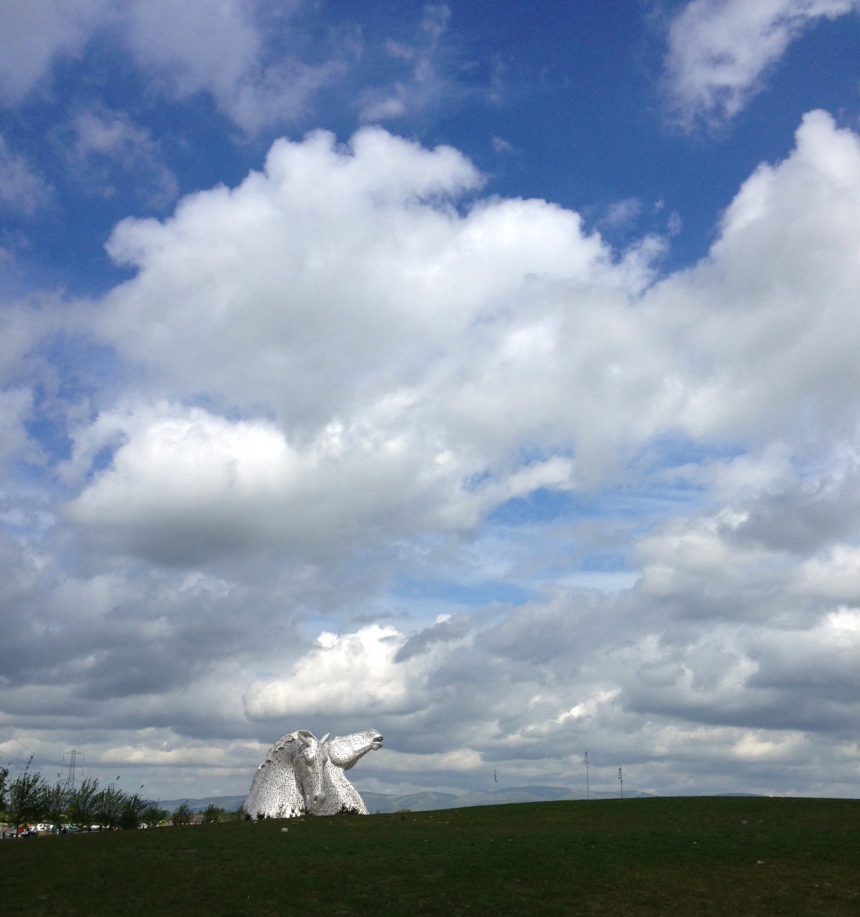
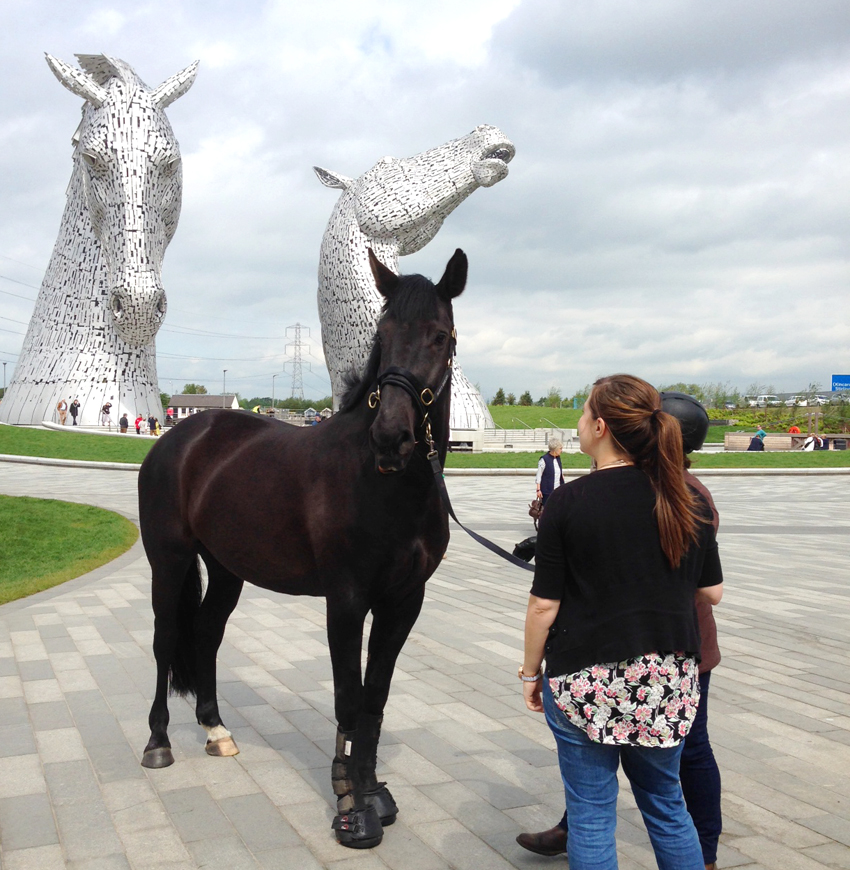
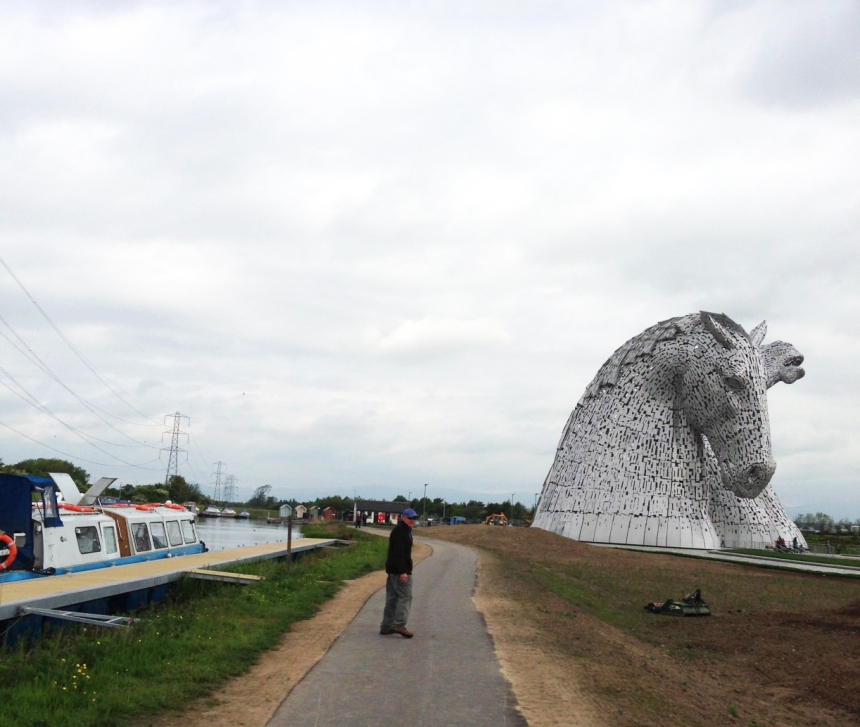
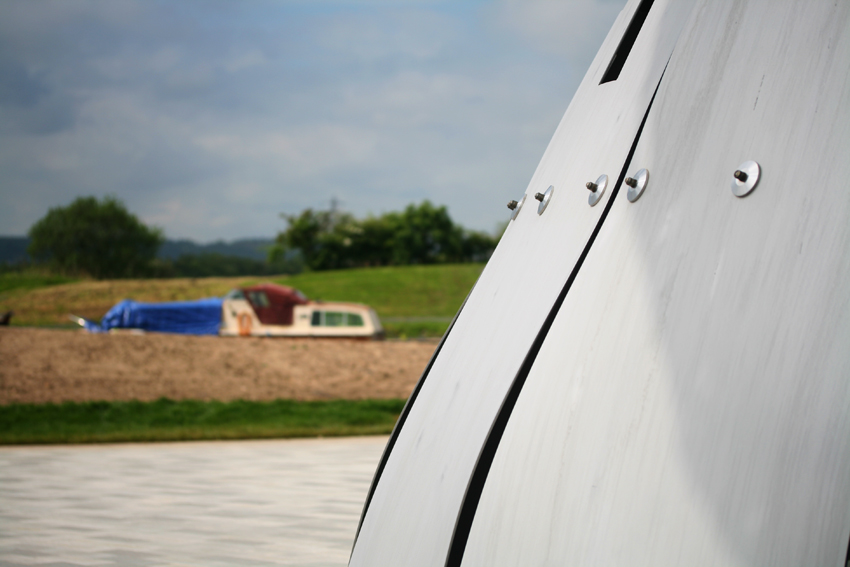

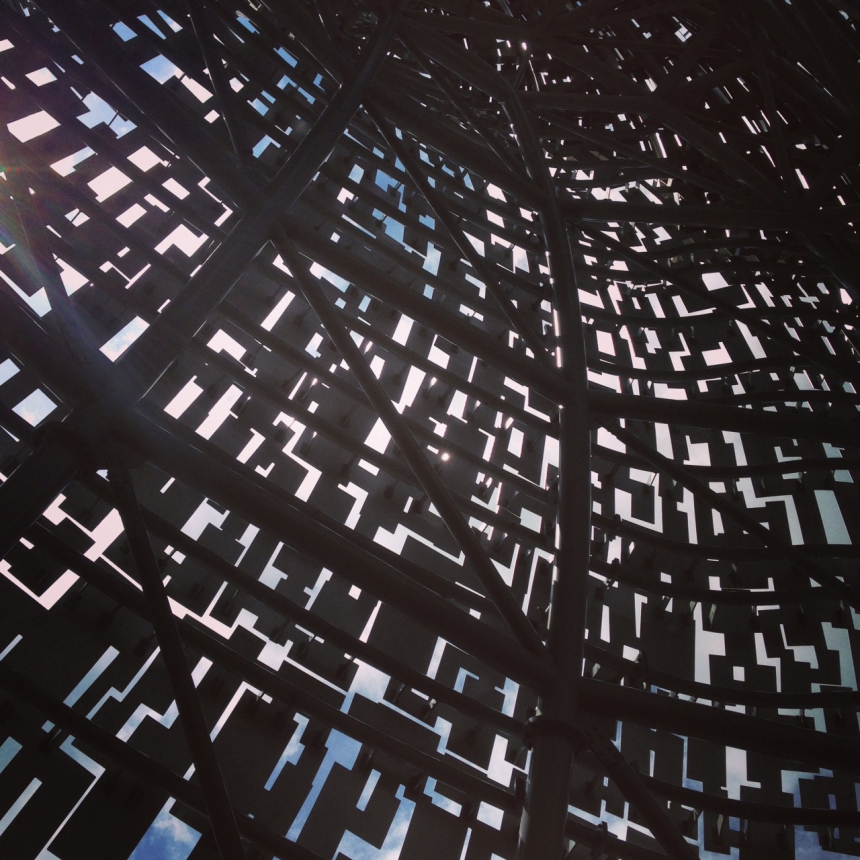
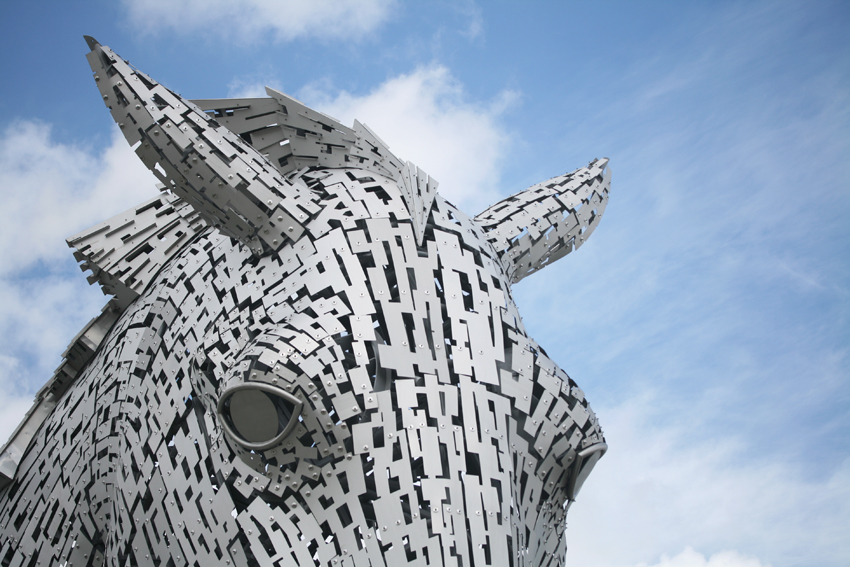
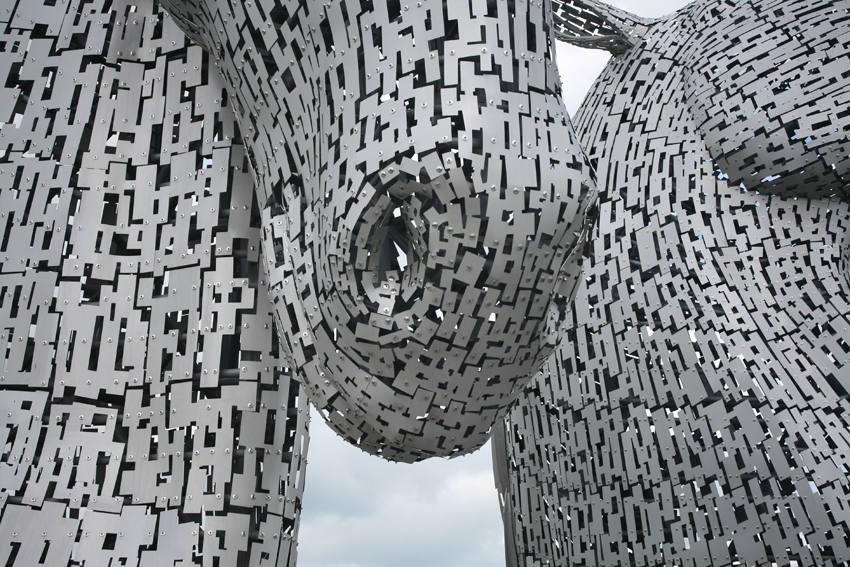
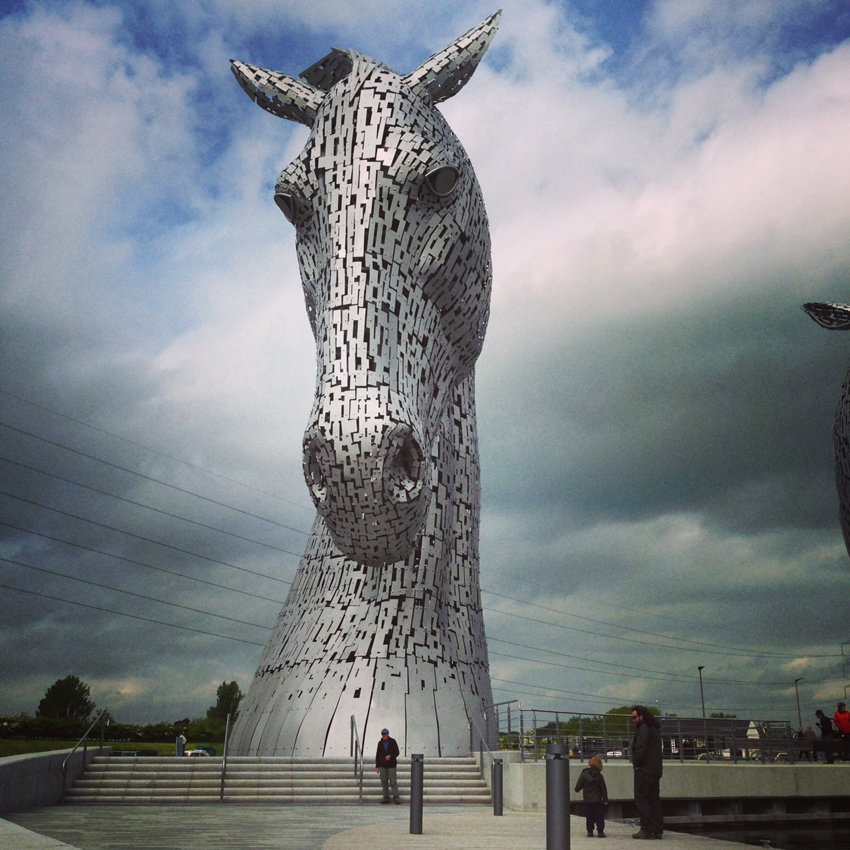
We are going up to visit Stuart and Alison soon, so will see them then. When I was in the Brownies I was in the Kelpie Six (rising through the ranks to become the Sixer!!)
LikeLike
How I wish I’d been a kelpie. I was a gnome. And only got to be seconder.
LikeLike
Great photos and great texts! Always enjoy reading your blog!
LikeLike
Wow!
LikeLike
Wonderful photos. Always enjoy the textures of your photo shoots as well.
LikeLike
Breathtaking! I hope I get to see them myself one day.
LikeLike
So beautiful and interesting.
LikeLike
I’ve noticed these being built on journeys to and from Stirling – you can see them from the motorway, and also from the Glasgow-Edinburgh train if you know when to look! They are wonderful and I am so glad they are now part of a public space. But I haven’t seen them close up yet – on the list. Thanks for sharing!
LikeLike
They are wonderul!
LikeLike
or rather, wonderFul!!!! :-)
LikeLike
Hi, those are absolutely amazing and beautiful. Thanks so much for sharing.
LikeLike
Thank you for sharing! They are truly amazing! I hope to visit one day as well.
LikeLike
thank you for that wonderful post, if ever I’m back in that part of the world I’ll certainly make a point of visiting. In Australia, a kelpie is a breed of sheepdog, so there’s still that tradition of service involved in the name.
LikeLike
Absolutely gorgeous. Funny thing I just got some Kelpie Ale made from Seaweed and the Williams Bros brewery in Scotland. I am in the States and my ‘go to’ beer is Alba from that brewery, made with Scottish Pine needles…YUM!!! Totally enjoyed the films you linked. Thank you.
LikeLike
Fabulous!
LikeLike
I had a bit of a deja vu moment — a smaller version of The Kelpies were on display in Chicago last summer, http://art-nerd.com/chicago/the-kelpies-by-andy-scott/
LikeLike
I had hoped to visit the Kelpies at the weekend when we were in Larbert at a family wedding but with one thing and another we didn’t manage it. Thanks for sharing the pictures Kate. The Kelpies look fantastic.
LikeLike
Fascinating. Thank you so much for sharing your visit with us!
LikeLike
Stunning! I’m particularly entranced by the compelling fluidity, as if we have only spied (from the corner of an eye) a partial glimpsed moment of these kelpies, mid-head-shake….as if our gaze has the power to freeze-frame and impose stillness on what–being (or seeming to be) so alive–must resume its natural flow and range of motion. Thank you so much for sharing! Jane
LikeLike
The video is simply Goose Bumpy…the construction, the music and and the way these sculptures seem to come alive with the changing of the light. Truly awesome! Thank you so much for sharing!
LikeLike
How beautiful and majestic. I’ve never seen anything so moving. Thank you for sharing this.
LikeLike
Those are truly amazing.
LikeLike
I think malevolent is right. They look wild and not a little frightening to me. Perhaps I’m just not so fond of horses despite their beauty, maybe because of it. And so huge.
Unnerving.
LikeLike
That is beautiful, and the film is great, too. Thank you!
LikeLike
They are wonderful!!!! Nothing touches me like the horse.. Another place I hope to visit. tHANK YOU…..
LikeLike
Breathtaking indeed.
LikeLike
How did I not know about these? They will definitely be on the list for a visit on my next trip home – Thanks!
LikeLike
I enjoyed your tour.
LikeLike
Those are completely amazing!
LikeLike
Thanks for sharing this beautiful art with us. As I was scrolling down, reading each piece of information that accompanied the photos, it seemed as if the eyes were following me as if to say, “Look at how majestically beautiful I am.” A must see on my return visit.
LikeLike
Did you see the wondrous Falkirk Wheel on the canal too?
LikeLike
So important and so beautiful.
LikeLike
That is one truly breath-taking post! thank you for sharing it with us
LikeLike
Monument to evil water beasts aside, how cool would it be to live in one of those?
LikeLike
Kate- How amazing! Thank you for showing us.
LikeLike
Breathtaking! Someday I hope to visit these myself. I love how wonderfully interesting they are from every perspective, up-close, inside and from afar. Captivating.
LikeLike
Highly recommended. We visited last week and loved the Kelpies.
LikeLike
Thank you for your blog and wonderfully detailed pictures. I have put these high up on my “things to do list” – hopefully more likely once my husband retires at the end of the year!
LikeLike
They are so beautiful in the pictures! I can only imagine how breathtaking they would have been in person. Thank you for posting :0)
LikeLike
Just love your blog! Your posts are always so captivating and so beautifully written. I especially enjoy the wonderful photos and stories from your country.
LikeLike
Ditto: perfection!
LikeLike
beautiful! deeply touching.
LikeLike
The beauty of Scotland. Lovely post and the stunning Kelpies are breathtaking. Thank you for sharing.
Sheila
http://sheilazachariae.blogspot.com/2014/05/off-hooksummer-shawl.html
LikeLike
I did not know The Kelpies. What a treat, thank you. The video on ‘their’ website is wonderful.
LikeLike
Breathtakingly beautiful, they must strike you with awe – yet another something special to put on my list :)
LikeLike
We visited on Saturday, not the tour just a walk around. They are so beautiful!
LikeLike